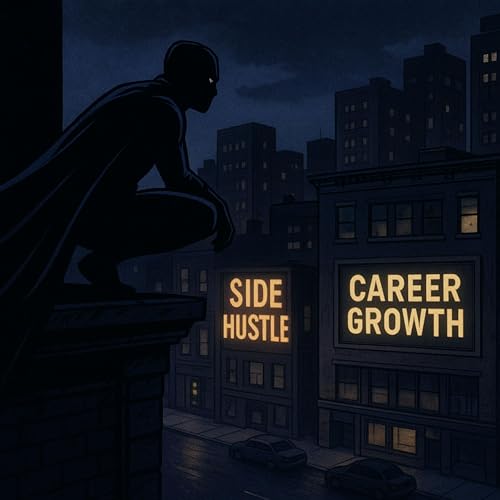Every leader has hit this crossroads at some point: a member of your team isn't hitting the mark. You've coached, you've encouraged, you've given feedback—maybe even tried a few creative workarounds—and yet, nothing seems to stick. So now comes the tough question: do you double down and keep investing in their growth, or do you make the hard—but necessary—decision to help them move on? Today, we're diving into one of the most uncomfortable yet crucial responsibilities in leadership: knowing when to coach up and when to coach out. And if you're not a manager, don't tune out just yet—understanding this process can give you a huge edge in your own career, helping you grow faster and avoid unexpected setbacks. No one likes having the hard conversations, but as a leader, they are inevitable. When a team member isn't reaching their potential, it's your responsibility to coach them up. You've seen what they're capable of—you know their strengths and possibilities—but it often takes patience, creativity, and persistence to help them break through self-doubt, inexperience, or gaps in skill. This kind of investment can transform a good employee into a great one. But sometimes, despite your best efforts, coaching up isn't the right answer. That doesn't mean the person is a failure; it simply means there's a mismatch—between the role, the team's needs, or even the culture—and the best outcome might be helping them find a position better aligned with their goals and abilities. Neither conversation is easy, yet the mark of strong leadership is facing them head-on rather than avoiding the discomfort. If you're a leader, your role is part coach, part mirror, and part compass. The mirror reflects reality—you show people where they're excelling and where they're struggling. The coach develops skills, offering feedback, resources, and encouragement. And the compass? It points the way forward, setting expectations and guiding direction. When it comes to coaching up, the first step is honesty. Don't sugarcoat feedback—people can't improve what they can't see. But honesty alone isn't enough. Without empathy, it feels like criticism. Pair your feedback with belief—belief that improvement is possible. Say things like, "I know this is a stretch, but I've seen you handle bigger challenges before," or, "You've got strong instincts here—let's work on building consistency." Next, define what success looks like. Be explicit about timelines, metrics, and outcomes. Vague coaching produces vague results, and no one wins there. And finally, remove roadblocks. Sometimes, performance issues aren't about motivation—they're about missing tools, unclear priorities, or overwhelming workloads. A great coach doesn't just demand results—they create the conditions for success. Now, let's tackle the harder side: coaching out. It's never fun. But keeping someone in a role where they're not thriving isn't compassion—it's avoidance. The truth is, the longer you delay an honest conversation, the more harm it causes. The employee loses confidence, the team loses morale, and your credibility as a leader takes a hit. Coaching out doesn't have to be a blunt "you're fired" moment. It can sound like this: "We've tried several paths to help you succeed in this role, and I know how hard you've worked. But I also see that you might be better suited for something different—maybe in another department, or even outside this company." It's never about blame. It's about fit. Some employees leave these conversations relieved; others may be surprised or frustrated. Either way, your responsibility is to preserve their dignity and provide support where possible—referrals, networking introductions, resume guidance. When you handle coaching out with integrity, you don't just protect the company's reputation—you enhance your own, building a reputation as a fair, trustworthy, and empathetic leader. So how do you decide when to coach up and when to coach out? Think of it as a combination of potential, performance, and fit. Coach up when the employee shows capability, willingness to learn, and motivation—but just needs guidance, skills, or confidence to reach their potential. Provide clear feedback, set expectations, and remove obstacles so they can grow. Coach out when there's a persistent mismatch between the role and the person—when skills, mindset, or alignment with team culture aren't clicking despite your best efforts. Delaying the decision only prolongs frustration for everyone involved. By approaching these choices thoughtfully, you ensure your team stays productive, motivated, and engaged, and you reinforce your credibility as a leader who balances compassion with accountability. Now let's shift perspectives. If you're an employee, here's a career accelerator you don't want to ignore: being coachable. That means listening with an open mind, resisting defensiveness, and treating feedback—even the ...
Más
Menos
 12 m
12 m Nov 25 202510 m
Nov 25 202510 m Nov 18 202513 m
Nov 18 202513 m Nov 11 202517 m
Nov 11 202517 m Nov 4 202513 m
Nov 4 202513 m Oct 28 20258 m
Oct 28 20258 m Oct 21 202510 m
Oct 21 202510 m Oct 14 202510 m
Oct 14 202510 m
